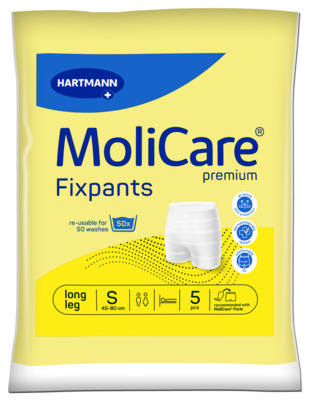Incontinence Advice
Seven Bladder Problems In Men
There are many different forms of bladder
problems in men that can occur for any length of time in early or later life.
In this article, we will look at common bladder issues that men may experience,
including highlighting signs and symptoms of bladder issues, and why you should
seek advice from your GP if you experience any of these. Understanding the
signs of bladder problems in men early will help to provide a solution sooner.
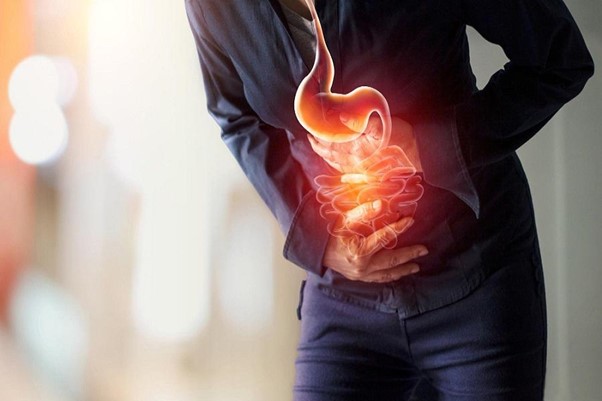
Understanding Bladder Problems In Men
The male urinary system is a complex network of organs responsible for the production, storage, and elimination of urine. One of the key components of this system is the bladder, a hollow muscular organ located in the pelvis. The bladder plays a vital role in the urinary system by storing urine until it is ready to be released from the body through the urethra during urination.
Bladder problems in men can significantly affect their quality of life. Several common types of bladder problems can arise, each with its own set of symptoms and potential complications. Fortunately, we have some potential solutions to ease experiencing these problems.
When trying to understand bladder problems in men it is crucial to recognise the signs, seek advice from a GP, to manage the conditions effectively.
- Common signs and symptoms of bladder problems include:
- Frequent urination
- A sense of urgency to pass urine.
- Difficulty initiating or stopping urination.
- Weak urine flow
- Discomfort or pain during urination
- Blood in the urine.
Do not dismiss these symptoms as a normal part of ageing, as they can be a sign of an underlying bladder problem that require medical attention. Early recognition and action can help prevent complications, improve quality of life, and ensure bladder problems are managed properly.
Neurogenic Voiding Dysfunction
Neurogenic voiding dysfunction occurs when the nerves responsible for transmitting signals to the bladder muscles to contract or relax are impaired, leading to various complications. These can include urine leakage, bladder or urinary tract infections, and potential kidney damage due to urine backup.
The underlying cause of nerve damage can stem from different factors, such as pelvic or spinal surgery. Additionally, conditions like uncontrolled diabetes, central nervous system disorders (including spinal cord injury, multiple sclerosis, brain tumours, cerebral palsy, Parkinson's disease, and stroke), can also contribute to the development of neurogenic voiding dysfunction. Recognising these underlying causes is vital in understanding and managing this condition effectively.
Male Incontinence
Involuntary urine leakage, known as overflow incontinence in men, is a prevalent condition. Two frequently encountered forms are stress incontinence and urgency incontinence. Urgency incontinence, also referred to as overactive bladder, is characterised by the uncontrolled contractions of the bladder muscles, resulting in the unintended release of urine.
This term is used due to the bladder's heightened activity and urgency, causing leakage. Both stress and urgency incontinence can significantly impact quality of life, appropriate diagnosis, and treatment to manage symptoms effectively. Understanding the distinct types of incontinence aids in identifying the underlying causes and implementing interventions for improved bladder control.
Stress Incontinence
Stress incontinence refers to the condition where the bladder experiences pressure from activities such as coughing, exercising, laughing, heavy lifting, or sneezing, resulting in the unintended release of small amounts of urine. While less common in men, it can occur because of previous prostate surgery performed to address conditions like prostate cancer or benign prostatic hyperplasia.
Recognising the potential connection between
stress incontinence and prior prostate surgery is essential in understanding
the underlying causes and implementing appropriate management strategies to
alleviate symptoms and improve bladder control. Prompt medical attention can
enhance the quality of life for men experiencing stress incontinence.
Urgency Incontinence
Urgency incontinence is led by the involuntary leakage of urine, accompanied by a strong and overwhelming urge to urinate. This condition arises due to irregular contractions of the bladder muscles, occurring at inappropriate times, including at night (Nocturnal Enuresis). In men, it is often associated with benign prostatic hyperplasia, although it can also be linked to various factors such as bladder inflammation, bladder stones, bladder cancer, diabetes, infection, or pelvic radiation.
Moreover, neurological conditions like
Parkinson's disease, multiple sclerosis, and stroke are commonly associated
with an overactive bladder. These conditions can induce bladder spasms,
resulting in the sudden urge to urinate and subsequent incontinence episodes.
Urinary Tract Infections Overview and Signs and Symptoms
Also known as a UTI, a urinary tract infection is caused by bacteria entering the urinary tract. These bacteria can affect the lining of the urinary tract and cause it to become irritated as well as infect the urethra, kidney, as well as bladder. People that experience a UTI infection can feel a burning sensation when they go to the toilet, as well as noticing cloudy or strange-smelling urine. This can also lead to urinating more often. Some men can even experience feeling a sharp pain on one side of the body, either near the abdomen or within the pelvic region. Other common symptoms are fever, fatigue, and even vomiting. Visiting your GP can determine the causes of a UTI, as well as what form of bacteria is in your urine.
UTIs don't always cause symptoms. When they do, they may include:
· A strong urge to urinate that doesn't go away.
· A burning feeling when urinating
· Urinating often, and passing small amounts of urine
· Urine that looks cloudy
· Urine that appears red, bright pink or cola-coloured — signs of blood in the urine
·
Strong-smelling urine
Kidney Stones
Kidney stones take the form of a stone-like shape within the kidneys. Sometimes, people can pass kidney stones without even realising. Having kidney stones can affect 1-10 people across their lifespan, and is therefore a common condition, especially in men. The average demographic of people who experience kidney stones are aged 30-40.
Signs of kidney stones
Not drinking enough fluids can lead to developing kidney stones, and this can be exacerbated if your family has a history of developing kidney stones. Protein-rich foods, including meat, fish, and beans can lead to the formation of kidney stones. If you have diabetes, gout, cystic fibrosis, and must take medication that contains diuretics or calcium-based antacids can greatly impact the risk of having kidney stones.
If you are unsure as to whether you have a kidney stone, you may have noticed a sharp side pain, blood in your urine, or even nausea, when you wee. Some can even experience fever or chills.
Treating kidney stones
Drinking more fluids, especially water, having
less salt in your diet, and maintaining a healthy weight can all contribute
towards lessening the chances of having kidney stones. If the stones do not
pass by themselves, your GP can provide medication to ease the pain, as well as
to help manage nausea and relax the ureter. If effects worsen, then you may
need to have surgery, such as a ureteroscopy or a shockwave lithotripsy.
Treatment and Management Options
Treatment options for bladder problems vary depending on the specific condition and its severity. In many cases, lifestyle modifications can play a significant role in managing bladder problems. These modifications may include dietary adjustments, such as:
● Avoiding bladder irritants like caffeine and alcohol.
● Maintaining a healthy weight and regular exercise.
● Bladder training exercises.
● Scheduled voiding.
●
Pelvic floor exercises.
Doing each of these exercises can help improve bladder control and reduce symptoms.
In some instances, surgical interventions may be necessary. Procedures like transurethral resection of the prostate (TURP) can alleviate urinary obstruction caused by an enlarged prostate, while sling procedures or artificial urinary sphincters are optional for stress incontinence.
Maintaining good bladder health is essential. This includes staying adequately hydrated, following regular bathroom habits, and practising pelvic floor exercises to strengthen the muscles that support bladder control. Taking proactive steps to promote bladder health can help manage and prevent future bladder problems.
Learn more about different incontinence products in men.
FAQs
What are common causes of incontinence in men?
Male incontinence can have various causes, such as prostate problems (prostate surgery or an enlarged prostate), nerve damage, urinary tract infections, certain medications, or weak pelvic floor muscles. Identify the underlying cause to determine the most appropriate treatment.
Can neurogenic voiding dysfunction be treated?
While neurogenic voiding dysfunction cannot be cured, it can be managed. Treatment can help relax the bladder muscle, intermittent catheterisation to empty the bladder, or surgery to improve bladder function. Your GP can give advice relating to neurogenic bladder issues and can provide guidance on the most suitable treatment plan.
How is male incontinence diagnosed?
Male incontinence is typically diagnosed through a thorough medical history review, physical examination, and possibly additional tests such as urinalysis, urodynamic studies, or imaging tests. These assessments help determine the underlying cause and guide appropriate treatment.
Can stress incontinence in men be treated without surgery?
Yes, non-surgical treatments are available for stress incontinence in men. These may include pelvic floor exercises () to strengthen the muscles that support the bladder, behavioural modifications, biofeedback therapy, or the use of a male external urinary collection device (such as a condom catheter).
How is urgency incontinence managed?
Management of urgency incontinence may involve a combination of lifestyle modifications (such as bladder training, fluid management, and dietary adjustments), medications to relax the bladder muscle, and pelvic floor exercises.
Sources
NHS. (n.d.) Transurethral resection of the prostate (TURP). [online]
Available at: https://www.nhs.uk/conditions/transurethral-resection-of-the-prostate-turp/
[accessed 14/07/23]
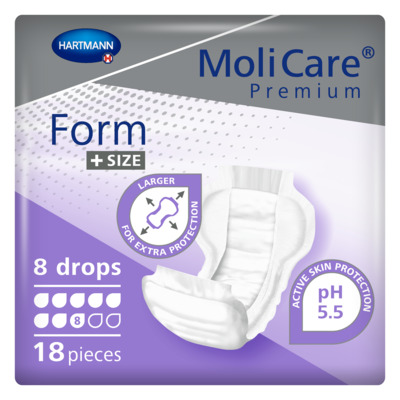
MoliCare Premium Form Bariatric
<h2>Optimum Wear Experience</h2> <p>Our selection of MoliCare® Premium Form + Size 8 drops provides the perfect solution as a high capacity pad to manage severe levels of incontinence in bariatric people in an easy and comfortable manner.</p> <p>Using this product alongside fixation pants allows for the skin to breathe and ensures optimum wearing comfort. These larger incontinence pads are ideal for those experiencing moderate to severe bladder or bowel weakness, catering to all wearers, whether active and independent or bedbound and dependent.</p> <h2>Body-shaped and disposable</h2> <p>Benefit from body-shaped, disposable incontinence pads designed to provide maximum leakage protection for both men and women. We recommend using these pads to deliver reliable and secure protection against leaks, keeping you confident and dry throughout the day. Maintain healthy skin with the skin-neutral value of pH 5.5 and an antibacterial finish. These pads are specially designed to let your skin breathe, ensuring comfort and well-being.</p> <p>Stay informed with the wetness indicator, showing when it is time to change the pad. The easy application and removal of this incontinence product are suitable for all wearers, whether standing or lying down.</p> <h2>Guaranteed Price Promise</h2> <p>With different absorbency levels available, MoliCare® incontinence products cater to all levels of incontinence, ensuring secure care and comfort.</p> <p>Embrace the convenience of MoliCare® Large Shaped Pads, providing you with the confidence to get on with your life without worries. Order online with our price match promise and discreet delivery, directly to your door, with free delivery on all orders over £40.</p> <p>For personalised information, our knowledgeable customer care team is ready to help. Call us today at 0800 028 9470 and experience the comfort and reliability of MoliCare® Premium Form + Size 8 Drops.</p>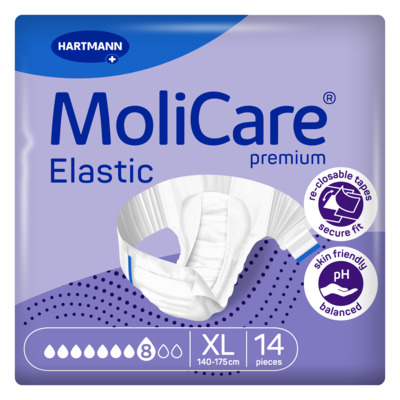
MoliCare® Premium Elastic 8 Drops
<p><strong>Convenient and Comfortable MoliCare® Premium Elastic 8 Drops</strong></p> <p>Some of the key benefits of investing in our products include:</p> <ul> <li>Suitable for men and women of all age groups.</li> <li>Skin-neutral pH value of 5.5 in all products.</li> <li>Premium elastic prevents leakages and odours.</li> <li>Easy to determine when a change is required.</li> </ul> <p><strong>Stress-Free Incontinence Experiences</strong></p> <p>When it comes to managing incontinence, there is a wide range of products available to cater to different levels of need. Among these options are incontinence slips, which consist of a large absorbent slip supported by an attached fixation system, commonly known as adult nappies.</p> <p><strong>Anti-Leakage Protection</strong></p> <p>Living with incontinence means wearing an appropriate product throughout the day, with occasional changes. That's why selecting the right solution that guarantees comfort, mobility, and easy changeability is crucial. The MoliCare® Premium Elastic 8 Drops is an all-in-one premium disposable adult diaper featuring two elasticated side panels and two re-closable hook and loop tapes on each side. This product caters to a wide spectrum of incontinence levels, ranging from moderate to severe bladder weakness and/or faecal incontinence. By wearing these incontinence slips, instead of regular underwear, people will experience a reassuring, comfortable fit, thanks to the elasticated side panels. Whether the wearer is active and independent or bedbound and dependent, they can enjoy full mobility and comfort. Water repellent, anti-leakage cuffs means that urine can’t escape from the sides urine is directed inwards to the absorbent core where it can be safely stored.</p> <p><a href="https://www.hartmanndirect.co.uk/incontinence-products">MoliCare® incontinence products</a> are available in different absorbency levels to cater for everyone with varying degrees of incontinence.</p> <p><strong>Choosing your Size</strong></p> <p>Measure waist at the largest width between the waist and hips. Select the product size based on the below sizing.</p> <p>Small: 28-35 inches (70-90cm)</p> <p>Medium: 33-47 inches (85-120cm)</p> <p>Large: 45-57 inches (115-145cm)</p> <p>Extra Large: 55-69 inches (140-175cm)</p> <p>HARTMANN Direct offers a fast, discreet delivery straight to your doorstep. Our products are developed with your convenience and comfort in mind, and we stand behind that quality with a price promise match. Additionally, orders exceeding £40 qualify for free delivery. If you require further assistance or guidance in selecting the right MoliCare® products, our friendly customer service team is just a phone call away.</p>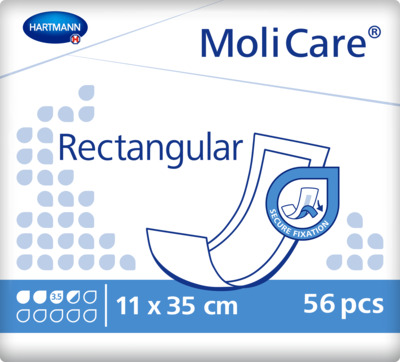
MoliCare Rectangular 3.5 Drops
<h2>Manage Incontinence</h2> <p>Choose MoliCare® for added protection based on your toiletry needs. Embrace the freedom and confidence that MoliCare® Rectangular Pads bring to your life. Managing incontinence has never been this comfortable and discreet for men and women.</p> <p>The MoliCare® Rectangular Pads are designed to handle slight incontinence levels. These slim and lightweight absorbent incontinence pads offer discreet protection that fits seamlessly in your underwear.</p> <p>Stay worry-free with their shape, which remains barely noticeable under your clothes. The waterproof backing provides added protection, while the core padding swiftly draws away any moisture, keeping you and your skin fresh and dry.</p> <p>Securely fix the Rectangular pad in your everyday underwear or use it with fixation pants for extra reassurance. Rest assured that these pads will protect you and your clothes from any leaks or spills.</p> <h2>Lightweight protection</h2> <p>Experience discreet and lightweight protection for light incontinence, tailored to fit your needs perfectly. Our online order service is quick and convenient, offering discreet delivery right to your door. Enjoy FREE delivery on all orders over £40, making your experience even more convenient and cost-effective.</p> <p>If you need assistance in choosing the best incontinence products for your needs, don't hesitate to reach out to our knowledgeable customer service team. We're here to help and provide you with the support and advice you need. Give us a call today at 0800 028 9470, and take the first step toward a more confident and comfortable life with MoliCare® Rectangular 3.5 drops.</p>